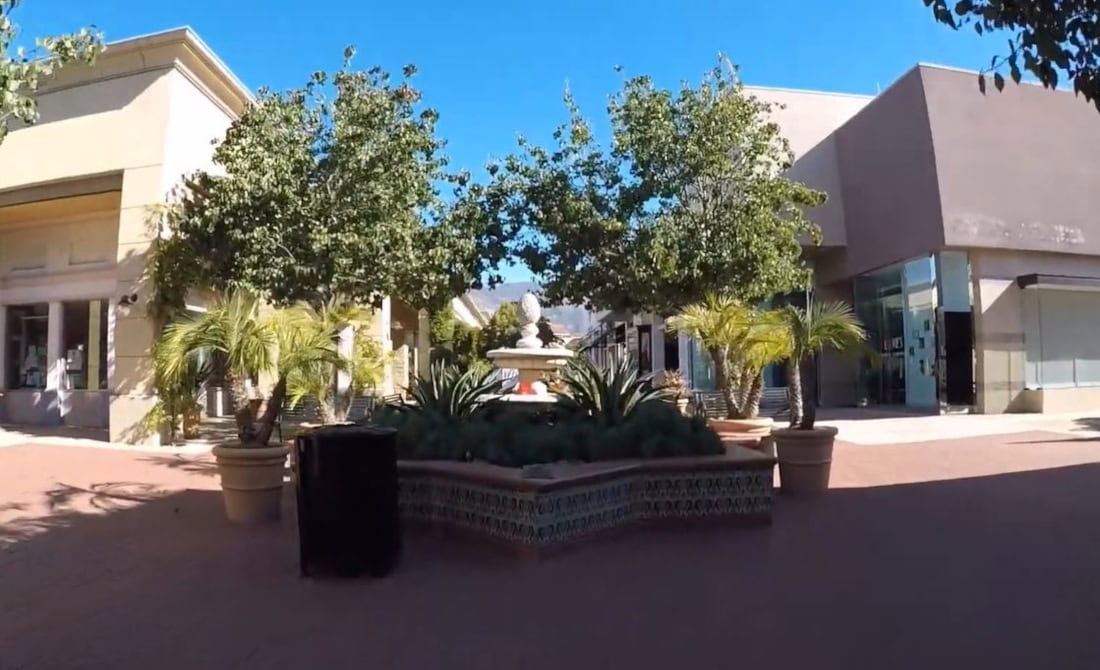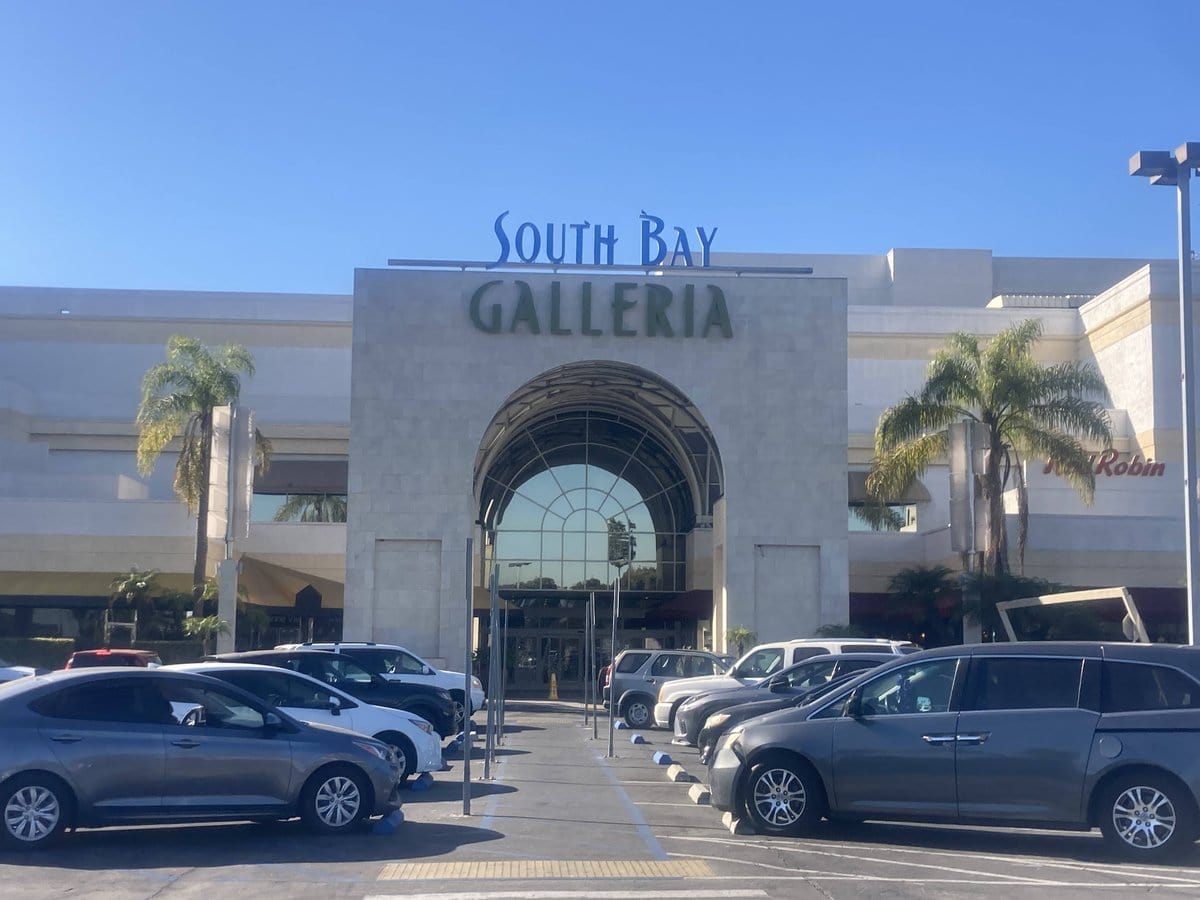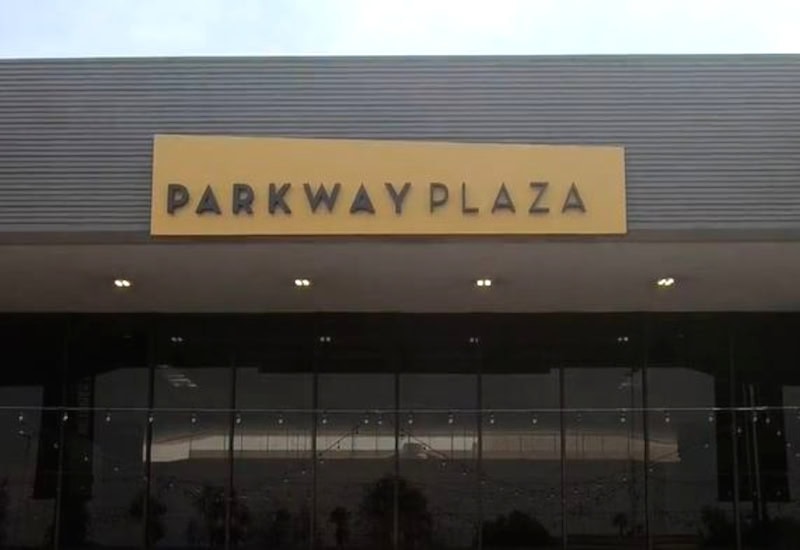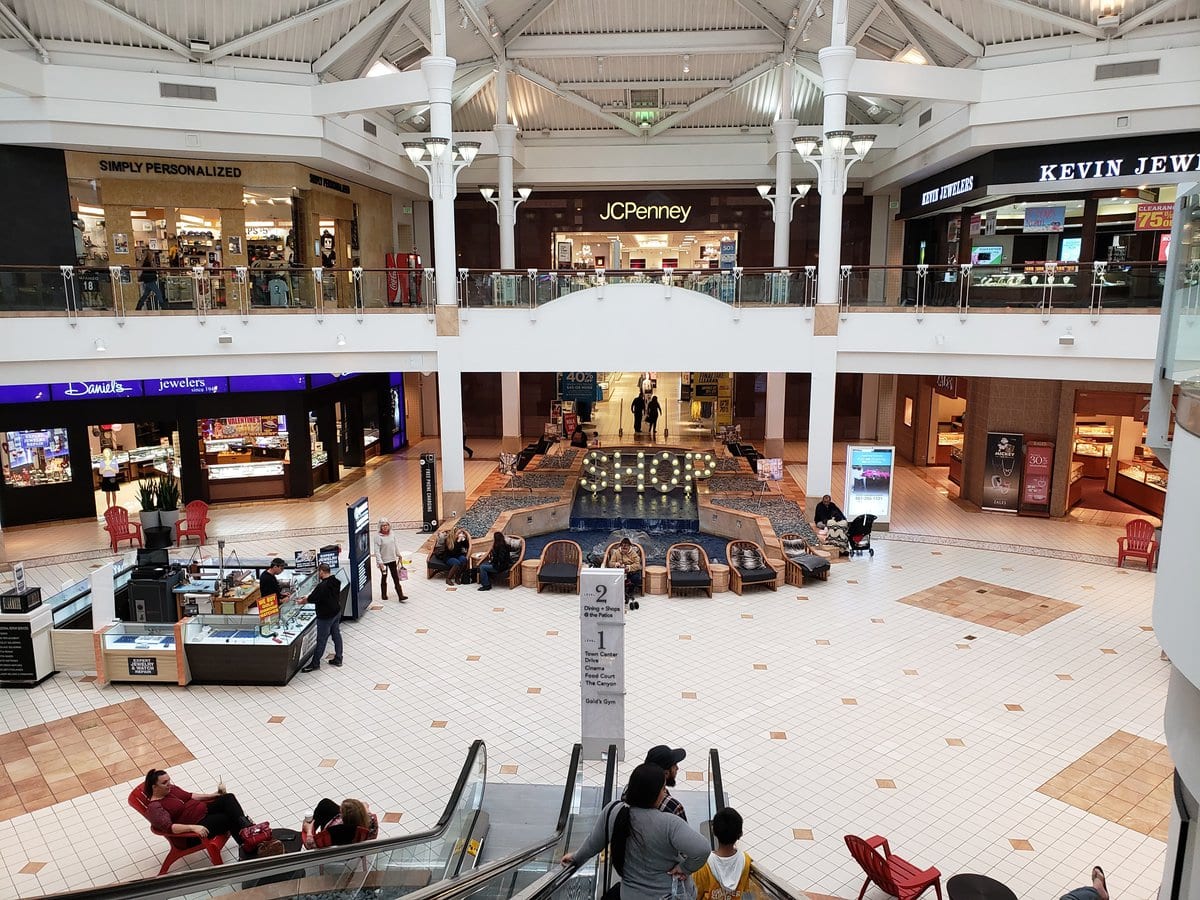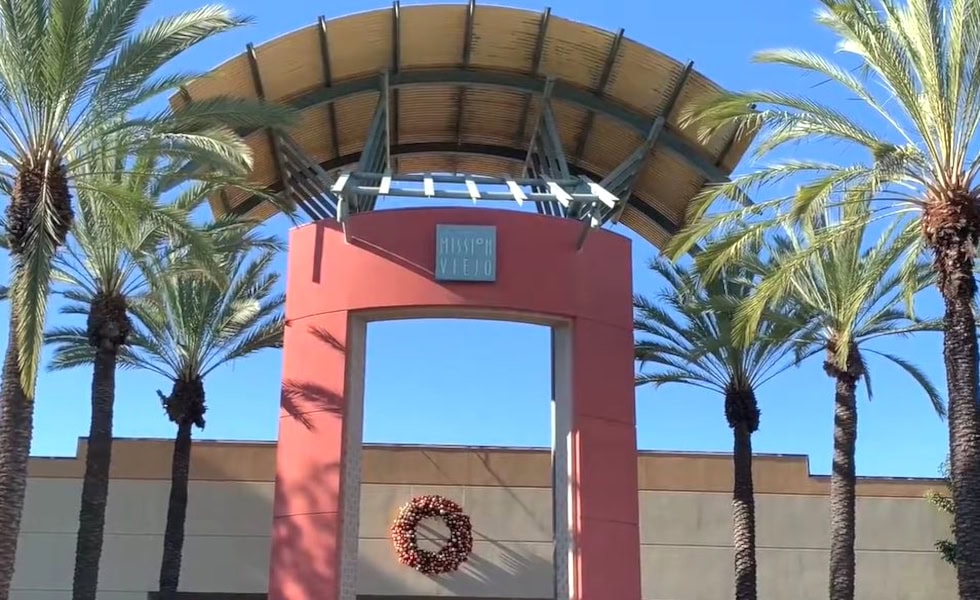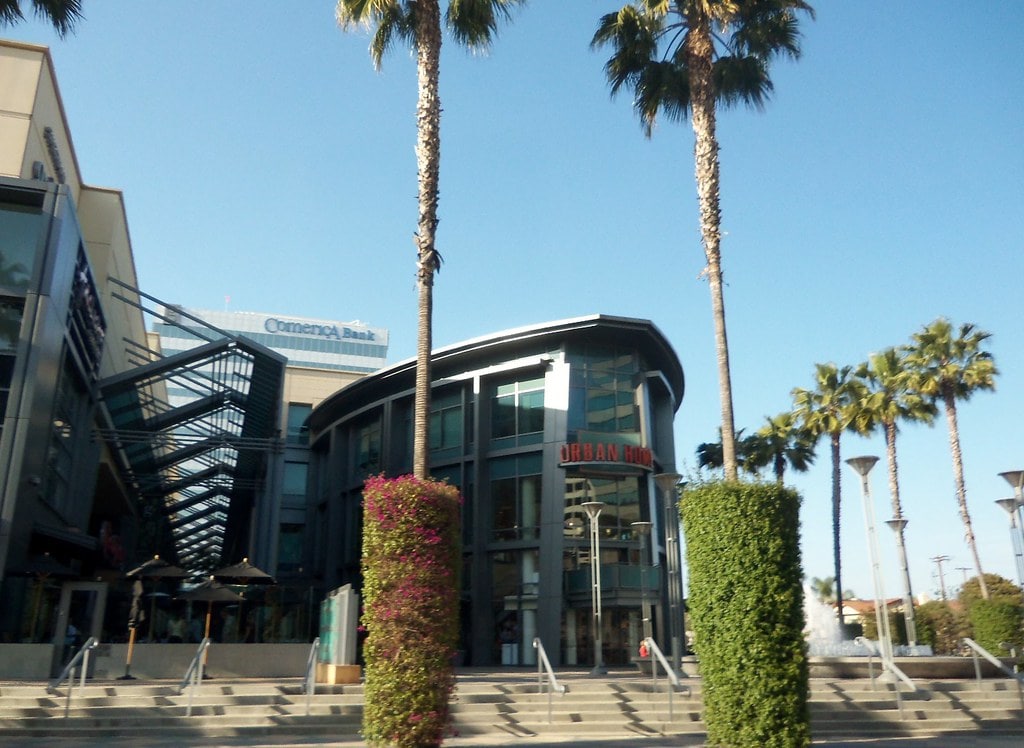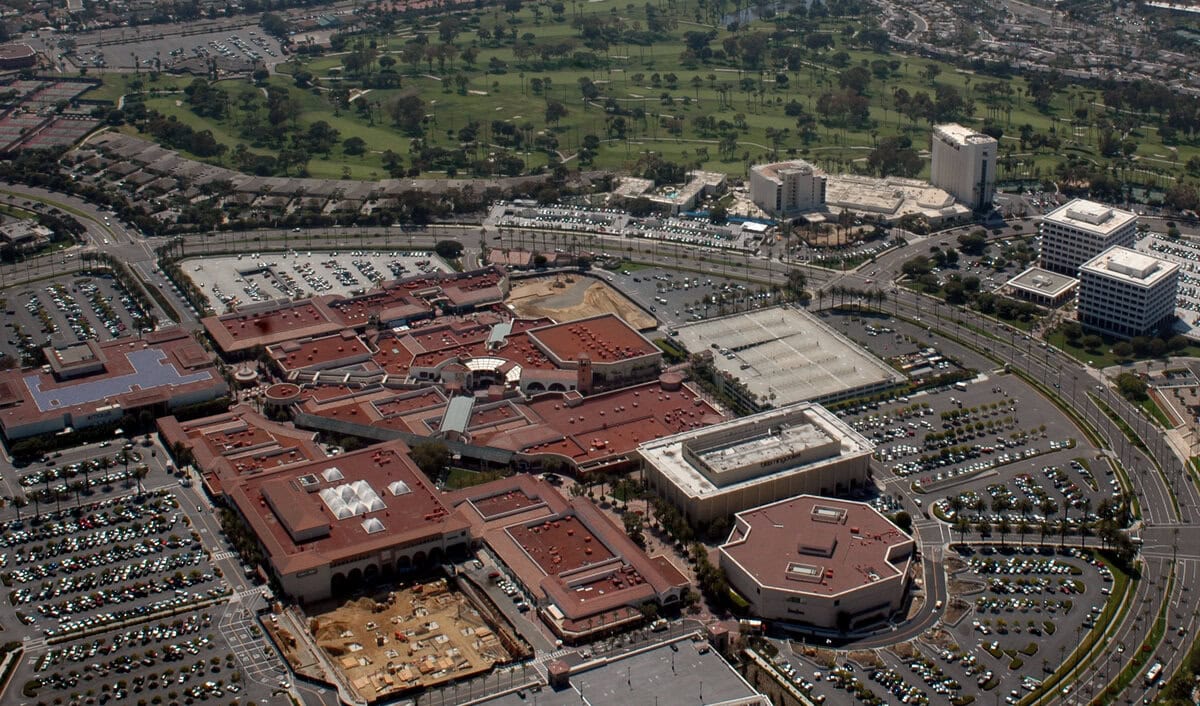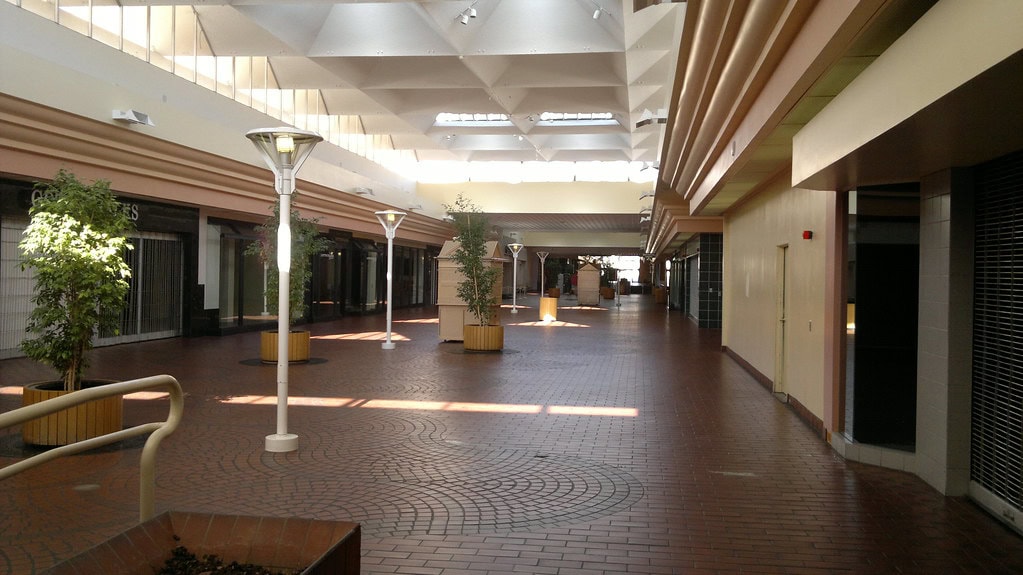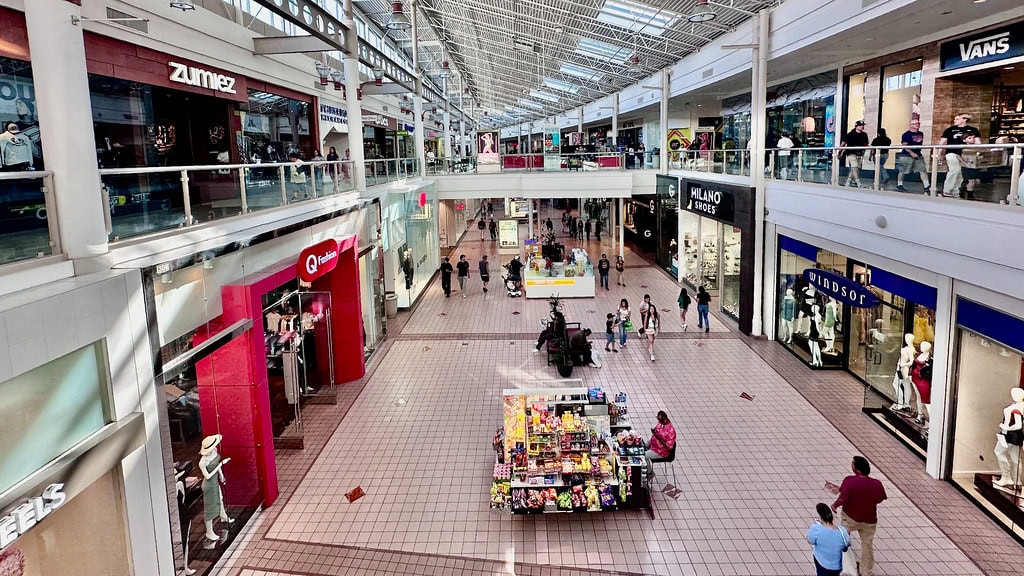The future South Bay Galleria, before it had walls
In February 1955, before anyone called it South Bay Galleria, the corner of 174th Street and Hawthorne Boulevard was a scraped, windy lot with an outsized destiny.
A 50-acre commercial project was announced for Redondo Beach, pitched to a South Bay packed with new tract homes and not nearly enough spectacle.
By December, May Company had signed on as the anchor, with executive Tom May arguing that this was one of the nation's largest population centers without a fully planned shopping complex.
It was less a sales pitch than a statement of intent. The developers had big ideas.
They hired architects A. Quincy Jones and Frederick Emmons, working with Victor Gruen Associates, the same Gruen who had just finished designing Southdale Center near Minneapolis, the country's first fully enclosed mall.
For Redondo Beach, they planned something different: an open-air center designed for the California sunshine but built with careful planning.
Above ground, more than 5,000 parking spaces spread out across the site, set up so shoppers felt they had practically parked in front of their destination.
The project had a working name - South Bay Center - and a clear purpose. It would be not just a place to shop, but the thing that made suburban life feel complete.
Architects, bowling alleys, and the circus debut
The first building to go up was not May Company but South Bay Bowling Center. Ground broke in February 1956, a symbolic nod to the fact that leisure sometimes precedes linens.
The alley opened later that year with 54 lanes and automatic pin-setters that made the future sound like the clatter of falling pins.
Inside, the Steak Knife restaurant turned league nights into family evenings, folding entertainment and calories into the development's early identity.
On September 10, 1956, the main groundbreaking marked the start of South Bay Center proper.
At its heart would stand a four-story May Company store designed by Albert C. Martin and Associates, the firm behind Los Angeles City Hall and Sid Grauman's Million Dollar Theatre.
The building stacked three full floors and a mezzanine above a basement that contained a soda fountain, the Bay Shore Tea Room, a book and record department, a camera shop, furniture, and - in case Cold War dread got too loud - a public fallout shelter.
When the center opened on August 22, 1959, with 37 tenants, the owners staged a parking-lot circus.
Celebrities turned up, a 1957 Ford Custom two-door sedan from Les Bacon and Sons of Hermosa Beach Ford was raffled off, and roughly 15 million dollars' worth of concrete, glass, and asphalt officially became a regional attraction.
South Bay Center was no longer a plan or a promise. It was where people went on Saturday.

Open-air years, fallout shelters, and campaign crowds
In its early years, South Bay Center was known for its open walkways instead of glass ceilings. Covered paths connected May Company to more and more stores.
During the 1960s and into the mid-1970s, shops like Sunset House Gifts, Florsheim Shoes, Nobby, Pier One Imports, and Putney Station Restaurant near the north parking lot on Artesia Boulevard opened.
The south lot added a car wash and a theater. The center felt like a small town's main street, planned by people who rented out the stores.
National politics briefly touched the center when, on November 1, 1960, Democratic presidential candidate John F. Kennedy made his last campaign stop in the area.
Speaking outside just days before his election, he talked about the country choosing between progress and standing still.
The speech ended quickly, but the memory lasted.
By 1965, about 10 million shoppers visited each year. Stores came and went, but the routine stayed the same: parking lots were busy, families walked past store windows, and the open-air design still felt modern.
For now, people in the South Bay enjoyed shopping outside.
From open-air South Bay Center to the enclosed galleria
By the early 1970s, Hawthorne Boulevard was full of competition.
New shopping centers opened along the street, and by 1979, the outdoor South Bay Center seemed a bit old compared to the newer, fully indoor mega-malls, especially Del Amo Fashion Center up the road in Torrance.
Across the country, shoppers wanted air conditioning, excitement, and a feeling that they could keep the outside world away.
In the early 1980s, center manager Bill Reckner announced a big change. Almost all of the South Bay Center would be torn down, leaving only the May Company building.
In its place, Forest City would build a fully indoor mall, adding two new main stores, Mervyn's and Nordstrom.
Del Amo's owners quickly sued, saying the project would cause traffic and environmental problems, but Judge John Cole dismissed the case.
Right after Christmas 1983, demolition crews started tearing down the old outdoor buildings around May Company.
By 1985, the new Galleria at South Bay opened as a closed, three-story mall.
Mervyn's and Nordstrom had already started doing business; May Company now faced inside, one of three main stores in almost 960,000 square feet of indoor shopping space on nearly 30 acres.
The time of shaded walkways was over. The South Bay had joined the national trend of indoor malls, where weather was just for show, and hawks were only store names.
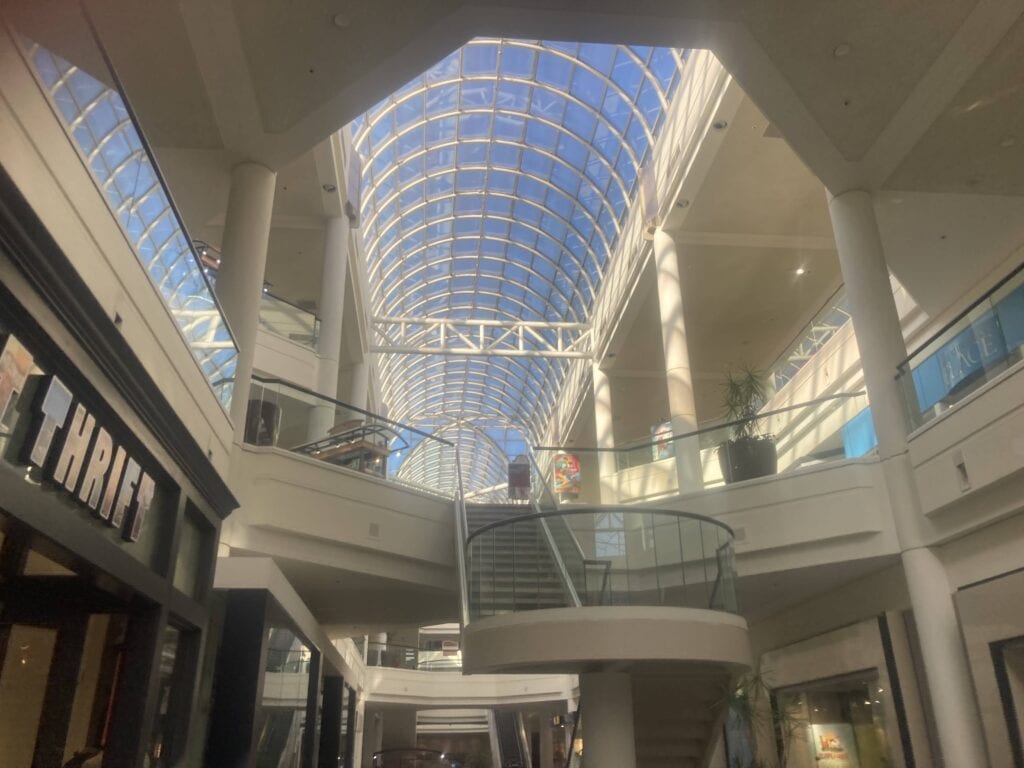
Rebrands, a 16-screen cinema, and granite shine
In the 1990s, the Galleria was seen more as a way to make money than just a building.
In 1992, Forest City sold half of the center to CalPERS, the California Public Employees' Retirement System, then bought it back in 2001.
Somewhere in the middle, the official name changed to South Bay Galleria, matching what people already called it.
Inside, the history of May Company showed how department stores were joining together across the area.
In 1993, after joining with J.W. Robinson's, the main store became Robinsons-May, combining years of Southern California shopping history into one name.
In 1997, General Cinema built a 16-screen movie theater, making part of the mall a place to see new movies as well as shop for school clothes.
When General Cinema was taken over, and the theater became an AMC in 2002, movies and popcorn continued as usual.
A 2003 renovation tried to make South Bay Galleria look more modern, like the new shopping centers people liked at the time.
A 45-foot Mediterranean-style limestone entrance was added, granite floors replaced the old ones, and a second elevator was put in Center Court.
In 2004, the mall was used as the setting for the movie "Fat Albert," easily standing in for a typical American mall.
Two years later, in 2006, Robinsons-May became Macy's after Federated Department Stores took over The May Department Stores Company.
Departing anchors, dinosaurs, and Q
The first big change to the main stores happened in December 2008, when Mervyn's went out of business and closed all its stores, including the one at South Bay Galleria.
That same month, Kohl's bought 48 of Mervyn's old locations, including the Galleria spot, and opened there.
The space was filled again, but this change showed that the main stores were now less like permanent fixtures and more like parts that could be swapped out.
In December 2012, Nordstrom said it would leave after almost 30 years at the Galleria and move to the rebuilt Del Amo Fashion Center.
For South Bay Galleria, losing a high-end main store to its longtime competitor felt like a step down.
On August 24, 2015, mall management said they would wait to find a new store for the space until they could plan a full renovation.
In the meantime, the mall had to get creative. The second and third floors of the old Nordstrom building became the Wonder of Dinosaurs, with moving dinosaur models in a space that used to sell fancy shoes.
The first floor became Q, a fast-fashion store aimed at shoppers looking for lower prices.
Forever 21, which had been a big name in fast fashion, said in November 2019 that it would close its South Bay Galleria store as part of a business reorganization.
The store closed in January 2020. The mall's size stayed the same, but it was losing its well-known brands.
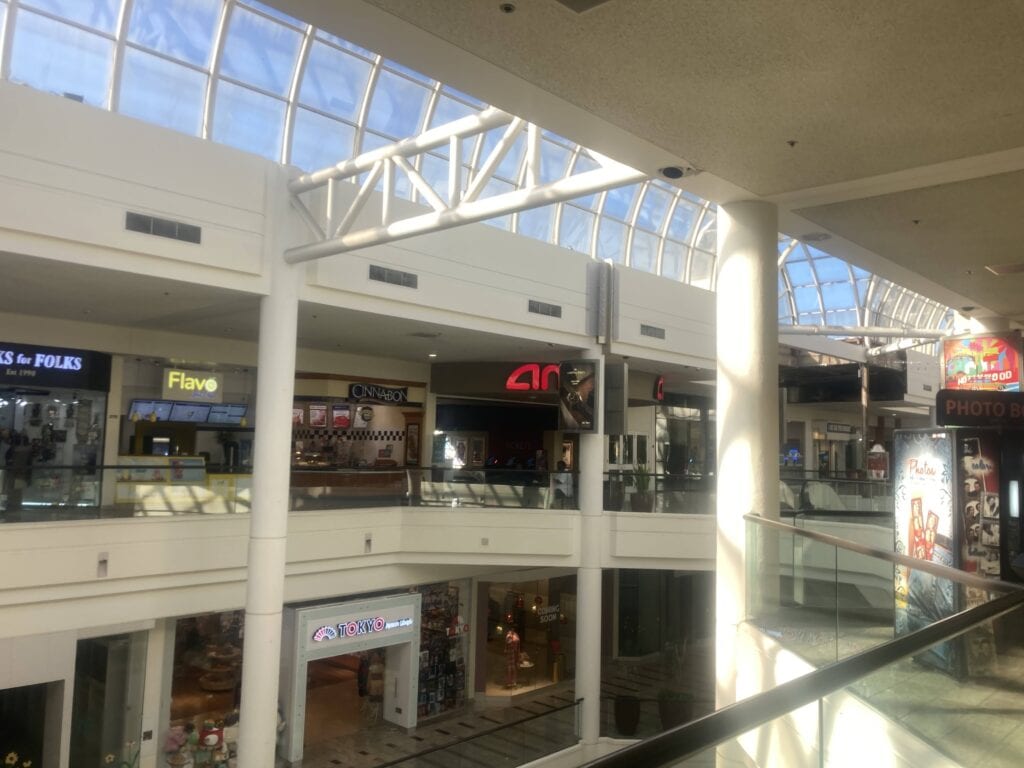
Social district dreams
In the late 2010s, the mixed-use redevelopment plan for South Bay Galleria was ambitious from the start. The design, led by Gensler and several other firms, focused on outdoor dining and walkways.
Forest City president Kevin Ratner said the goal was to let people walk, bike, or use public transportation instead of always driving.
The property's location near the planned Metro C Line extension and its many bus lines, all meeting near Kingsdale Avenue and 182nd Street, made the idea seem possible on paper.
Residents objected to the original plan for 480 homes, so the number was cut to 300 in the first phase, even though the city's Housing Element said the site was a good place for new homes.
In January 2018, Australian investor Queensland Investment Corporation (QIC) bought South Bay Galleria from Forest City Realty Trust with a new plan in mind.
The company wanted to remove some of the parking lot and add six acres of green outdoor space, a big staircase leading into the mall, separate retail buildings, and apartment buildings.
In August 2019, QIC brought in Luxembourg-based L Catterton Real Estate as a 50 percent partner, and in January 2019, the Redondo Beach City Council approved a major redevelopment of about 30 acres.
The plan included a hotel, hundreds of apartments, office space, more stores, and large public plazas.
Slow-motion years of plans and no cranes
After the 2019 go-ahead for a new mix of homes, shops, and offices, South Bay Galleria got stuck in a strange waiting period.
On paper, the future seemed clear: hundreds of apartments, a hotel, offices, plazas, and a redone mall all grouped together as a social district.
In real life, the parking lots stayed unchanged. The only real changes were in the drawings.
Then came 2020. The pandemic hit, stores had a hard time, and the project was delayed by banks and higher loan costs, rather than design problems.
Phase 1 was split into smaller pieces: a 300-unit building and a hotel on the north side along Artesia Boulevard, a town square, turning the old Nordstrom into offices, and new plans that focused more on outdoor dining and spaces that could be used for different things.
City staff checked building plans while investors checked budgets.
By 2023, the redevelopment was in a strange situation: in public meetings, it was an active, planned project, but at the site, it was still the same old mall, getting a little quieter each year.
Late that year and into early 2024, the developer tried again to bring back the full 650-apartment plan from before, adding another 350 apartments to the southwest parking lot.
By mid-2024, the plans were under review. The cranes, though, were still just an idea.
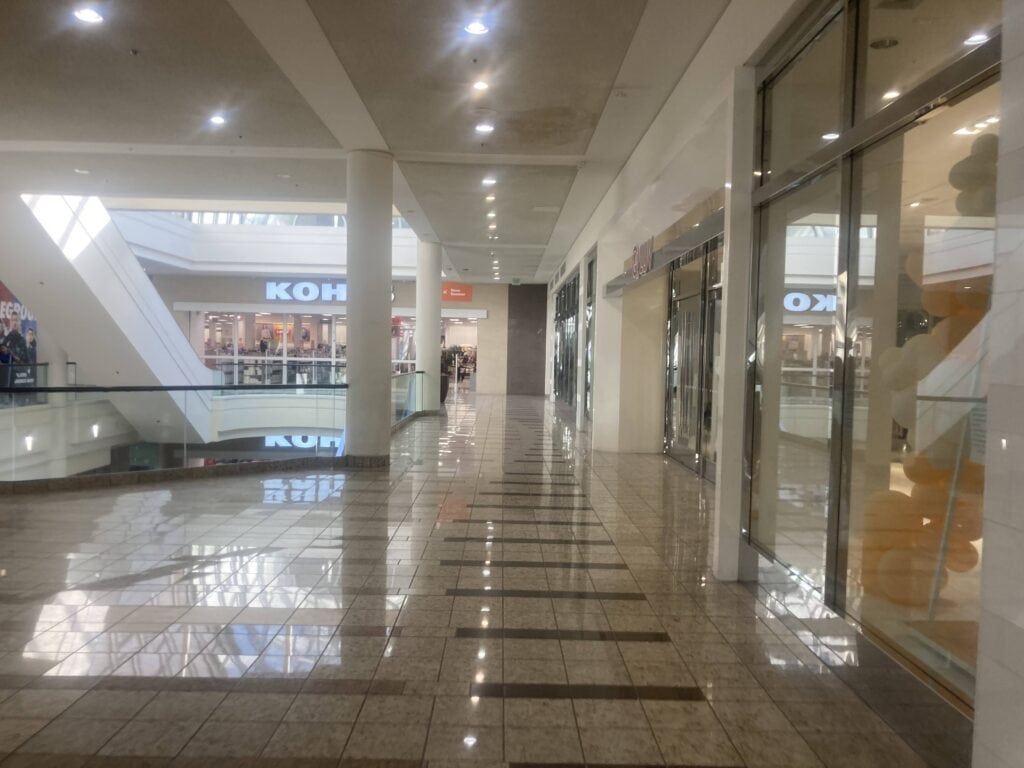
Foreclosure, entitlements, and Phase Two
Behind the renderings, the capital stack unraveled. In 2025, L Catterton defaulted on its mall venture, and Beverly Hills-based Kennedy Wilson took control of South Bay Galleria through foreclosure.
The 29.6-acre, roughly 1.27 million-square-foot property, including parking, was listed for sale through Newmark even as redevelopment entitlements crept forward.
Meanwhile, a more defined Phase Two emerged on a 3.26-acre parking lot at Kingsdale Avenue and 177th Street.
Designed by Studio One Eleven, the proposal calls for a terraced building of three to eight stories, with 350 studio to three-bedroom homes wrapped around an 845-car parking garage and 8,300 square feet of ground-floor commercial space.
The structure would step down toward Kingsdale, ending in townhomes along the street. The project must dedicate either 10 percent of its units to very low-income households or 20 percent to low-income ones.
On August 21, 2025, the Redondo Beach Planning Commission approved the necessary addendum to the environmental review, amended permits, and tract maps.
The first phase, already entitled, targets the northern parking lots along Artesia Boulevard for a 150-room hotel, a 300-unit residential building with affordable units, more than 30,000 square feet of new commercial space, and a town square plaza.
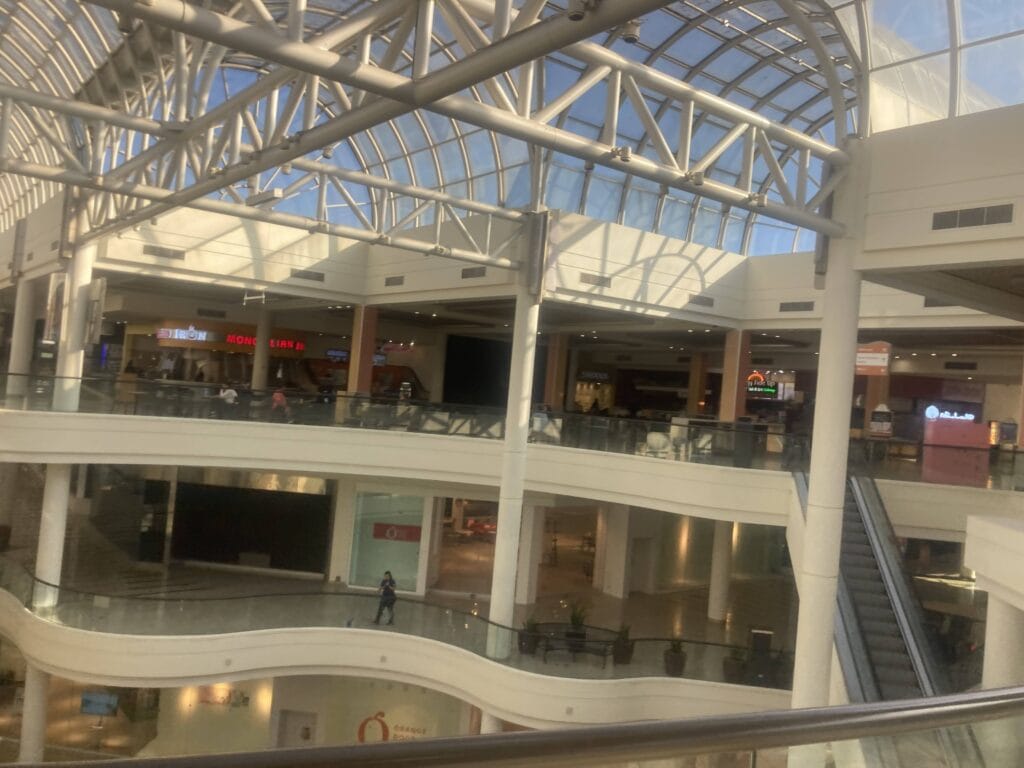
Incidents, rumors, and a waiting mall future
While planners pushed phases around on paper, life at the Galleria's edges turned harsher.
The property saw serious incidents in its parking structures, including a 2024 injury case and a 2025 suicide confirmed by the county medical examiner, reminders that public space is never purely architectural.
By late 2025, local stores were busy swatting down rumors that the mall was closing outright.
South Bay Galleria is still open, if much quieter, with Macy's, Kohl's, Wonder of Dinosaurs, and AMC anchoring more than 120 shops and restaurants that now include tenants like Zumiez, Shoe Palace, Tillys, Arepas Colombianas, Red Robin, Tokyo Grill, and Cocina Authentic Mexican Kitchen.
Kennedy Wilson and city officials say redevelopment will be phased, keeping parts of the mall operating while parking lots and dead wings are remade.
As of late 2025, construction has no announced start date, and the Galleria sits where it has for about 70 years - at the corner of Hawthorne and uncertainty, waiting for its next version of the future.

